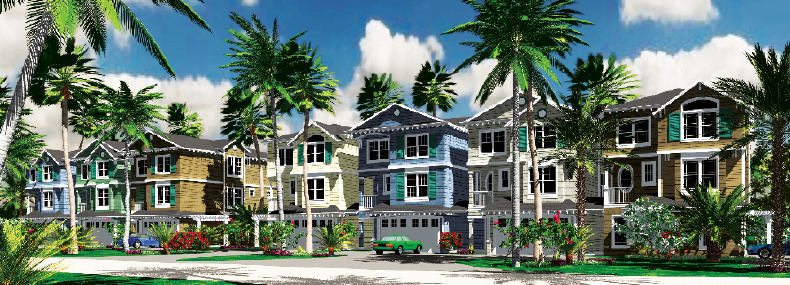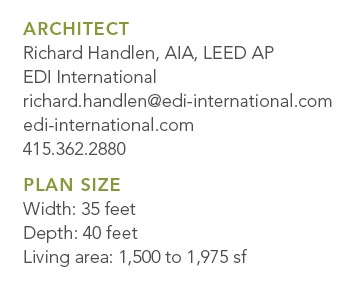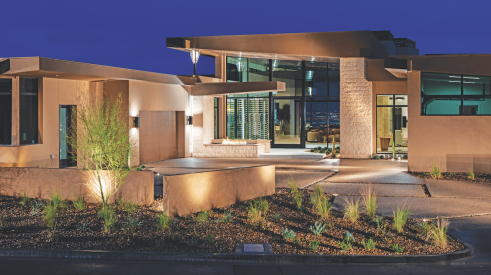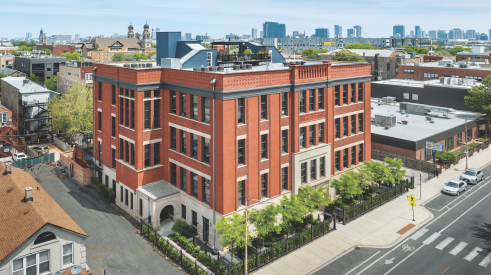A neighborhood that’s walkable is one of the most important items on prospective buyers’ checklists right now, across market segments. While pedestrian-friendly developments typically include retail, office, and housing, there’s increasing interest in simple pocket neighborhoods that consist of smaller homes, with an emphasis on people rather than automobiles. Here, cars are often relegated to secondary locations, allowing residents to stroll through common courtyards, interacting with neighbors during the walk to and from home. In areas where attached garages are still deemed necessary, garages can be set on a rear lane. In many ways, the new pocket neighborhoods are a look back to residential planning and building of yore, before the automobile dominated. A return to narrow streets, wide sidewalks safe for walking and biking, and roomy front porches appears to be gaining favor. With an idea as innovative as a pocket neighborhood, it’s important to adjust the details to suit your specific market. While each of the following concepts handles the automobile differently, each pays plenty of attention to the value of walkability.
Beach Cottages
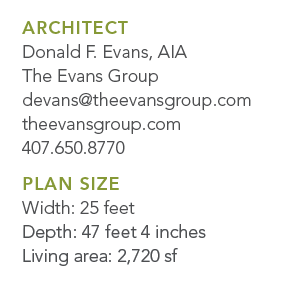 This small site on the Atlantic coast, situated among very high-end custom homes, led us to create a quaint community of seven three-story cottages. Designed in a Coastal Craftsman style with an appropriate color palette, these homes are tall enough to afford views of the ocean over the sand dunes that provide privacy on the first floor. The homes feature three bedrooms, 3½ baths, and a den.
This small site on the Atlantic coast, situated among very high-end custom homes, led us to create a quaint community of seven three-story cottages. Designed in a Coastal Craftsman style with an appropriate color palette, these homes are tall enough to afford views of the ocean over the sand dunes that provide privacy on the first floor. The homes feature three bedrooms, 3½ baths, and a den.
Streetscape view: See main image, above
Partial site plan: See below
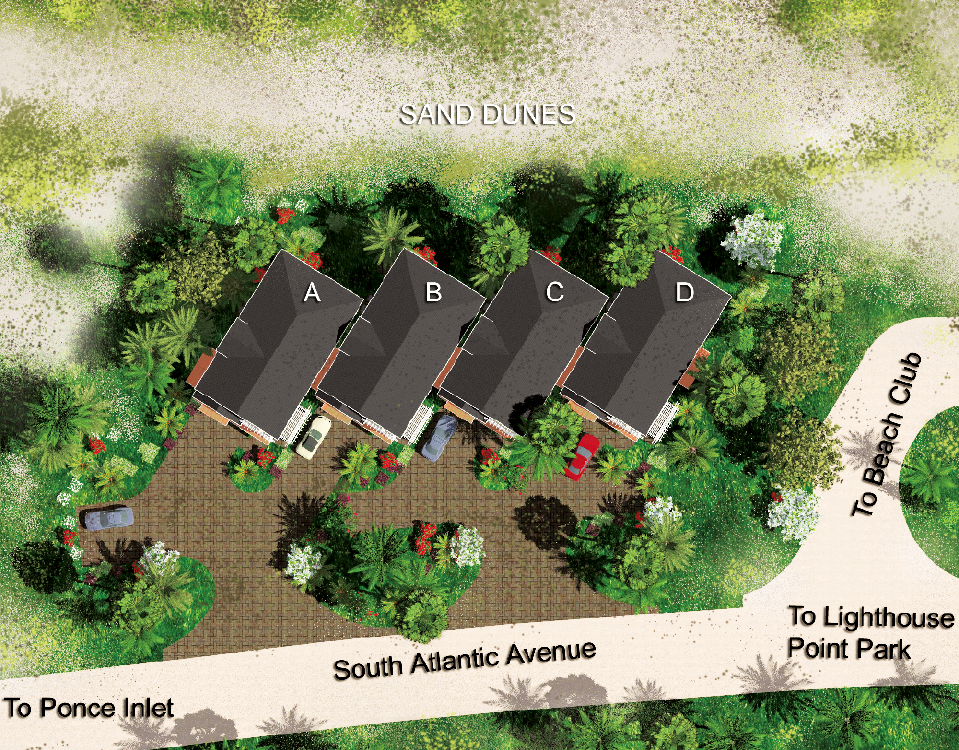
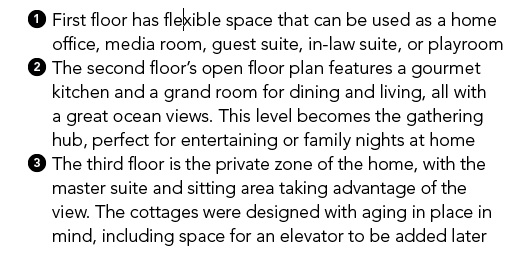
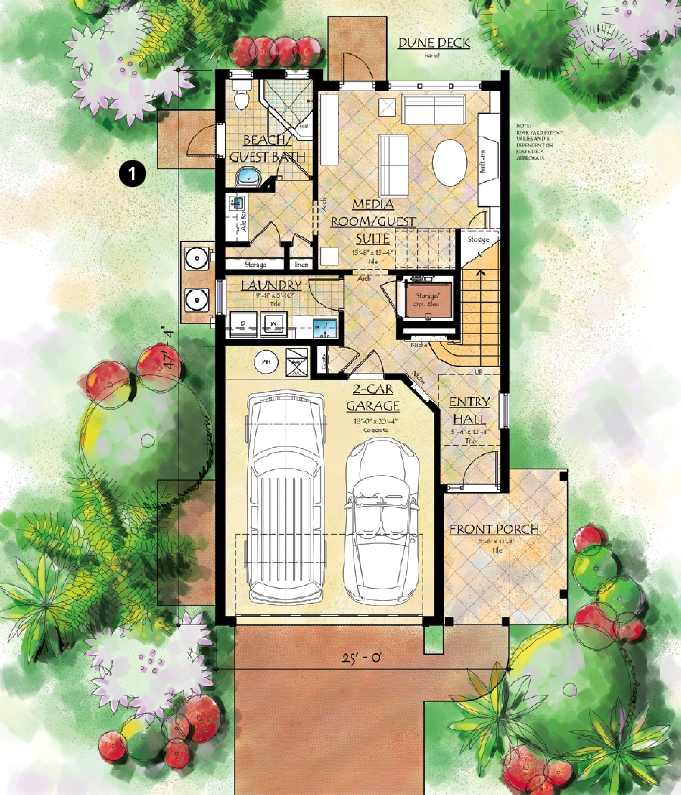
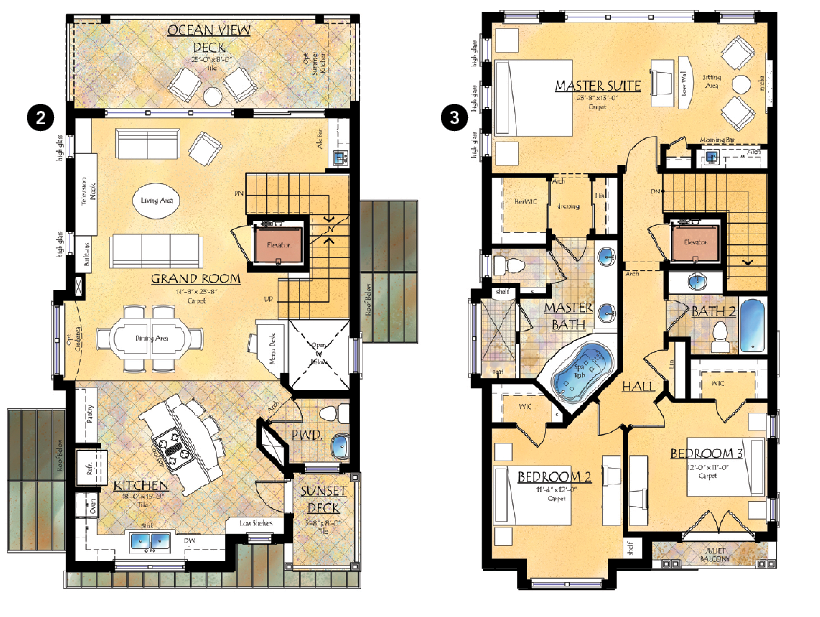
The Park View
This entry won a competition sponsored by the city of Menlo Park, Calif., to convert a vacant 6-acre industrial site into a residential community. The site juts into the edge of an existing working-class neighborhood from an adjacent, unused railway. Requirements included a 1-acre park open to the surrounding community and at least 47 single-family homes. The park is centered on the site with one side open to the existing neighborhood. On the other three sides sit new homes with front porches overlooking the park. Some lots are as small as 3,000 square feet, to achieve density. Six floor plans are available, and all houses have front porches and garages pulled back from the front façades. Because the rail line is slated to become the alignment for California’s high-speed train, houses at the site’s rear must meet acoustic requirements.
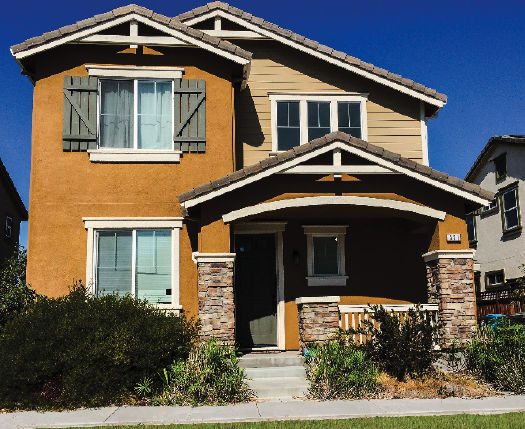
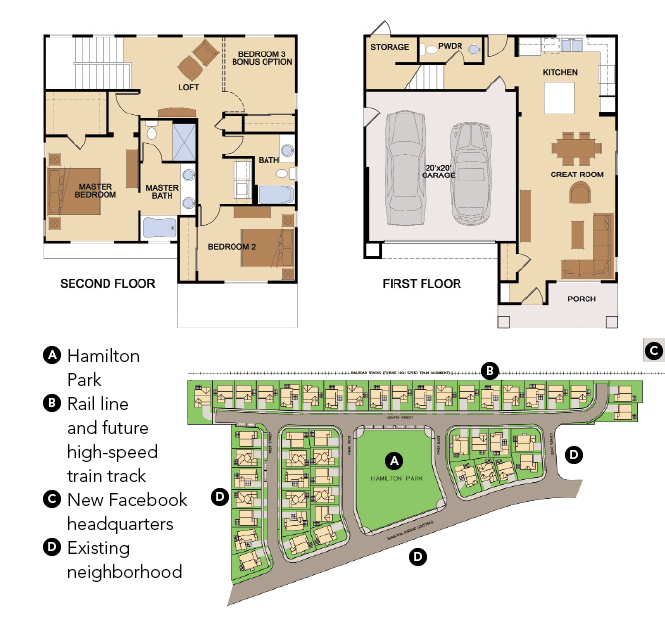
Apricot Commons—Blenheim
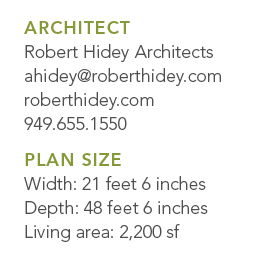 This three-story, single-family housing development is on a 1.4-acre lot in a lively Silicon Valley suburb near a freeway transition road. A dedicated bioswale at the center will serve as a pocket park and gathering place for families. Inspired by Bay Area architects Julia Morgan and Ernest Coxhead, the homes were designed in a Spanish style to attract affluent high-tech couples. The largest of four plans has been organized for a young family while affording ample space to grow into. Each home has a private side yard created by a reciprocal-use easement with its neighbor, providing extra storage and barbecue areas.
This three-story, single-family housing development is on a 1.4-acre lot in a lively Silicon Valley suburb near a freeway transition road. A dedicated bioswale at the center will serve as a pocket park and gathering place for families. Inspired by Bay Area architects Julia Morgan and Ernest Coxhead, the homes were designed in a Spanish style to attract affluent high-tech couples. The largest of four plans has been organized for a young family while affording ample space to grow into. Each home has a private side yard created by a reciprocal-use easement with its neighbor, providing extra storage and barbecue areas.
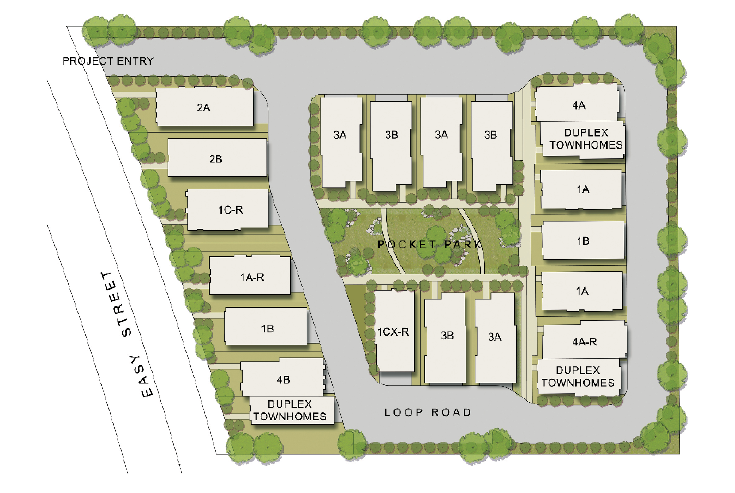
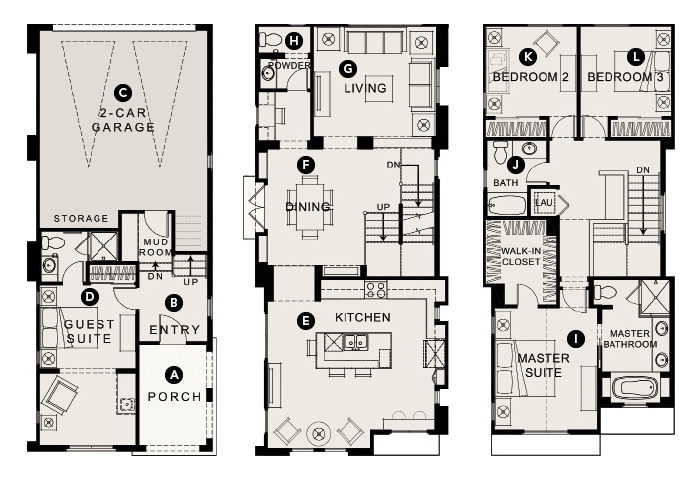
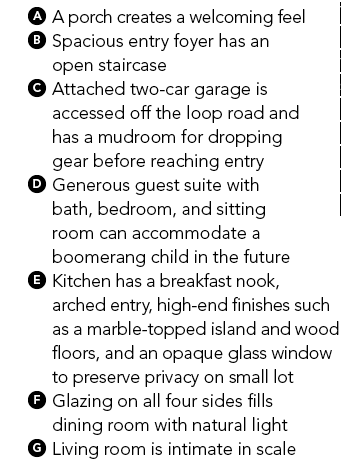
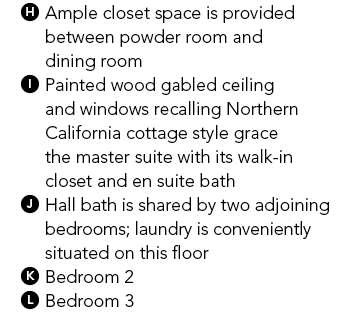
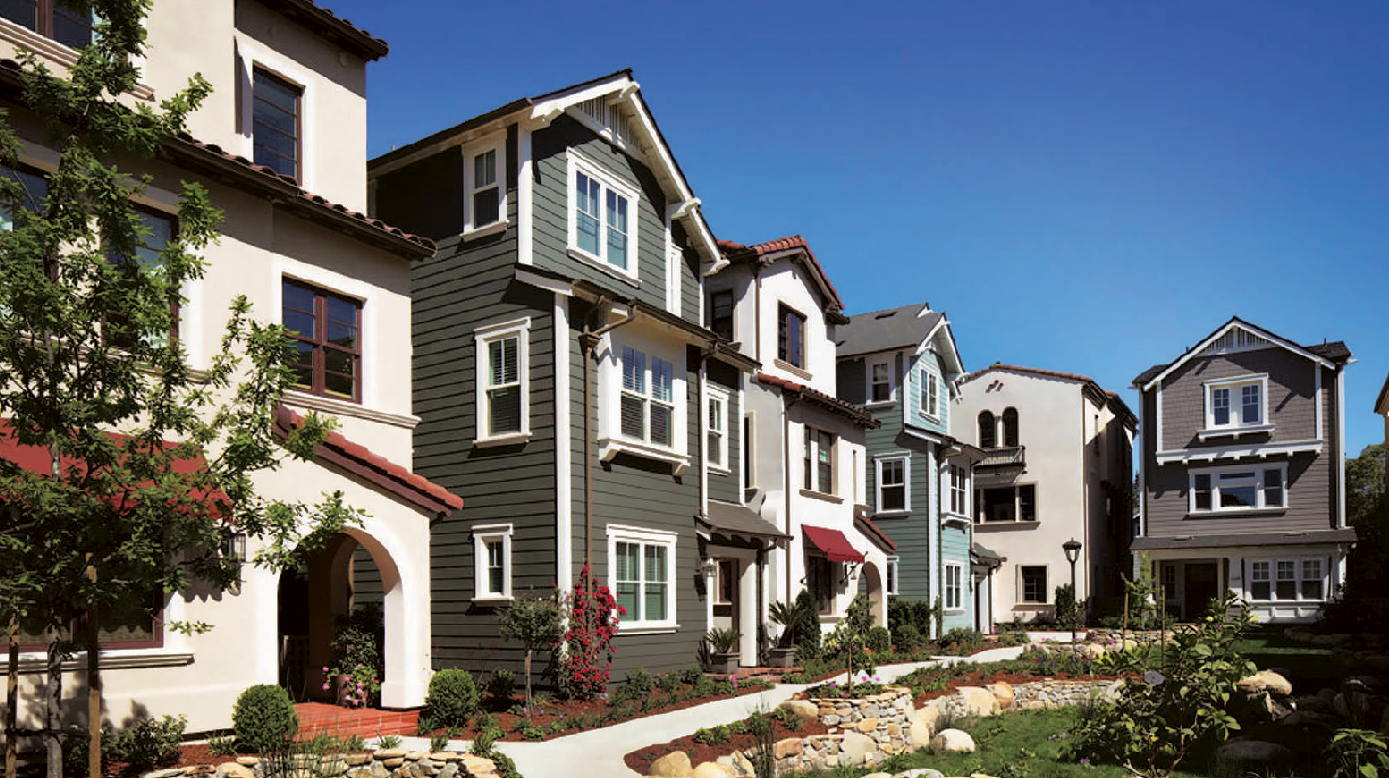
The Empty Nest
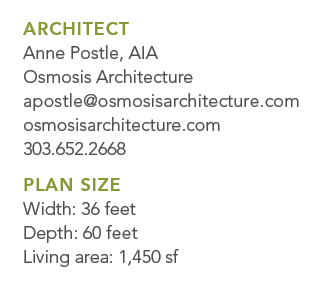 This infill community of six paired homes is ideal for the lock-and-leave buyer. Big function is packed into small square footage: a pocket office (everything essential for the business of life is steps away), a family foyer with hooks and cubbies, a walk-in pantry, access from the master closet to the laundry, and a sitting alcove in the owner’s suite. Even the pets are provided for in this plan. A private fenced courtyard provides the outdoor space needed for outdoor dining, grilling, and Fido (buyers in this category are very likely to have a dog). The “Goldfinch” and the “Chickadee” create the perfect empty nest.
This infill community of six paired homes is ideal for the lock-and-leave buyer. Big function is packed into small square footage: a pocket office (everything essential for the business of life is steps away), a family foyer with hooks and cubbies, a walk-in pantry, access from the master closet to the laundry, and a sitting alcove in the owner’s suite. Even the pets are provided for in this plan. A private fenced courtyard provides the outdoor space needed for outdoor dining, grilling, and Fido (buyers in this category are very likely to have a dog). The “Goldfinch” and the “Chickadee” create the perfect empty nest.
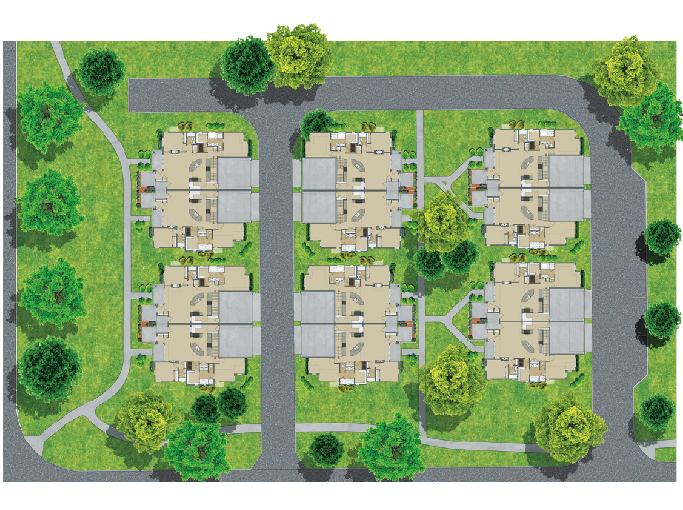
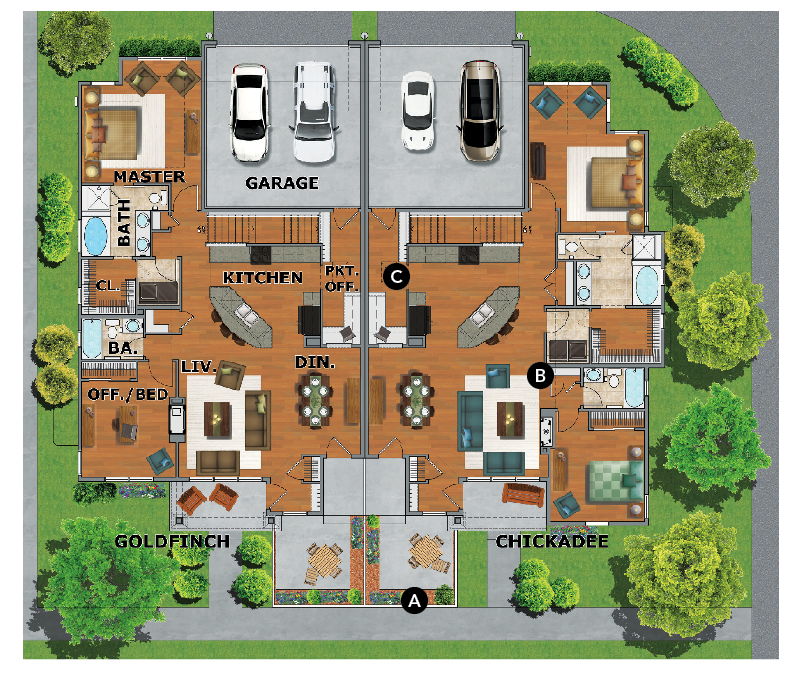
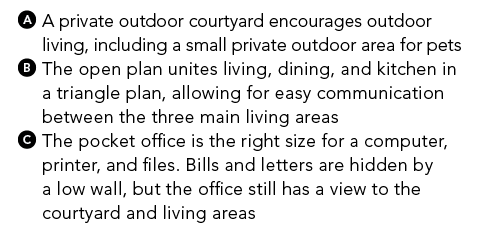

Rough Creek
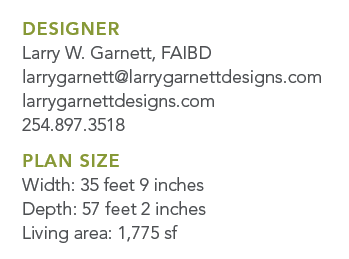 Several parcels of land adjacent to existing homes allowed the creation of a pocket neighborhood featuring 11 cottages that range from 950 to 1,800 square feet. Each home has two parking spaces, one of which is in an enclosed garage. As residents walk from their cars through the common courtyard or along a sidewalk, there is opportunity to visit with neighbors who are relaxing on their front porches. The narrow streets are designed to provide inset guest parking in addition to slowing down traffic speed, ensuring a pedestrian-friendly environment. A nearby walking trail leads to a neighborhood park.
Several parcels of land adjacent to existing homes allowed the creation of a pocket neighborhood featuring 11 cottages that range from 950 to 1,800 square feet. Each home has two parking spaces, one of which is in an enclosed garage. As residents walk from their cars through the common courtyard or along a sidewalk, there is opportunity to visit with neighbors who are relaxing on their front porches. The narrow streets are designed to provide inset guest parking in addition to slowing down traffic speed, ensuring a pedestrian-friendly environment. A nearby walking trail leads to a neighborhood park.
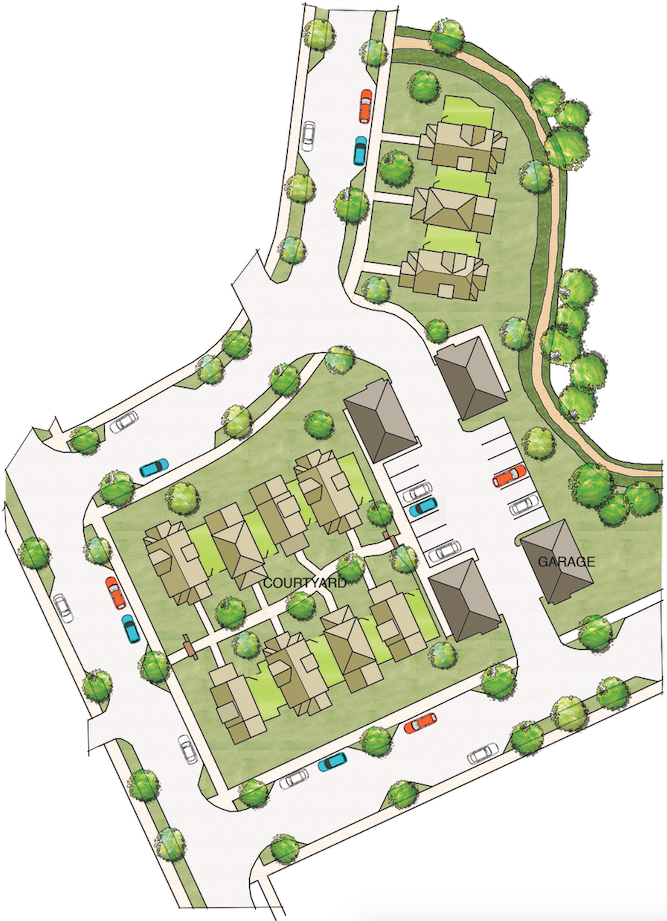
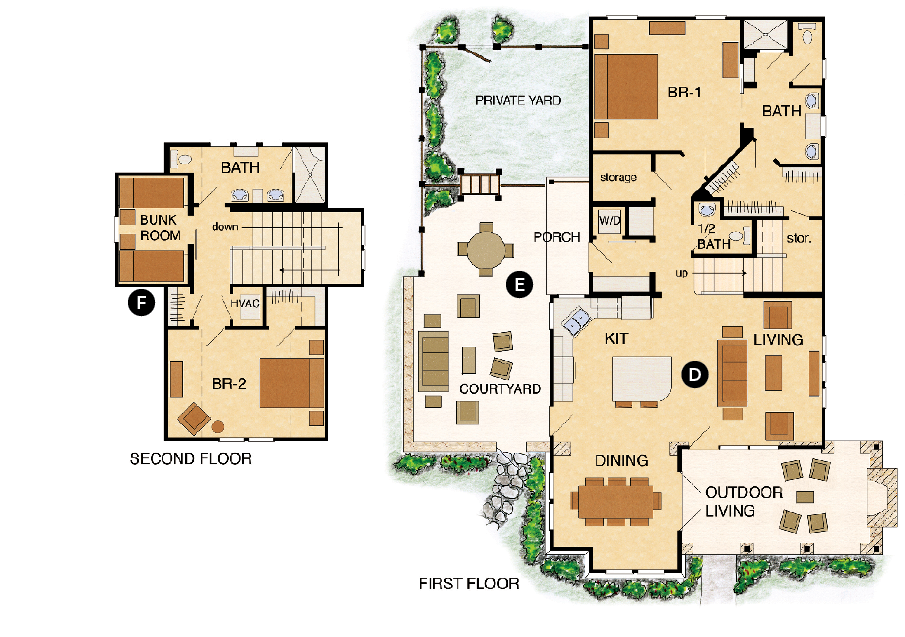

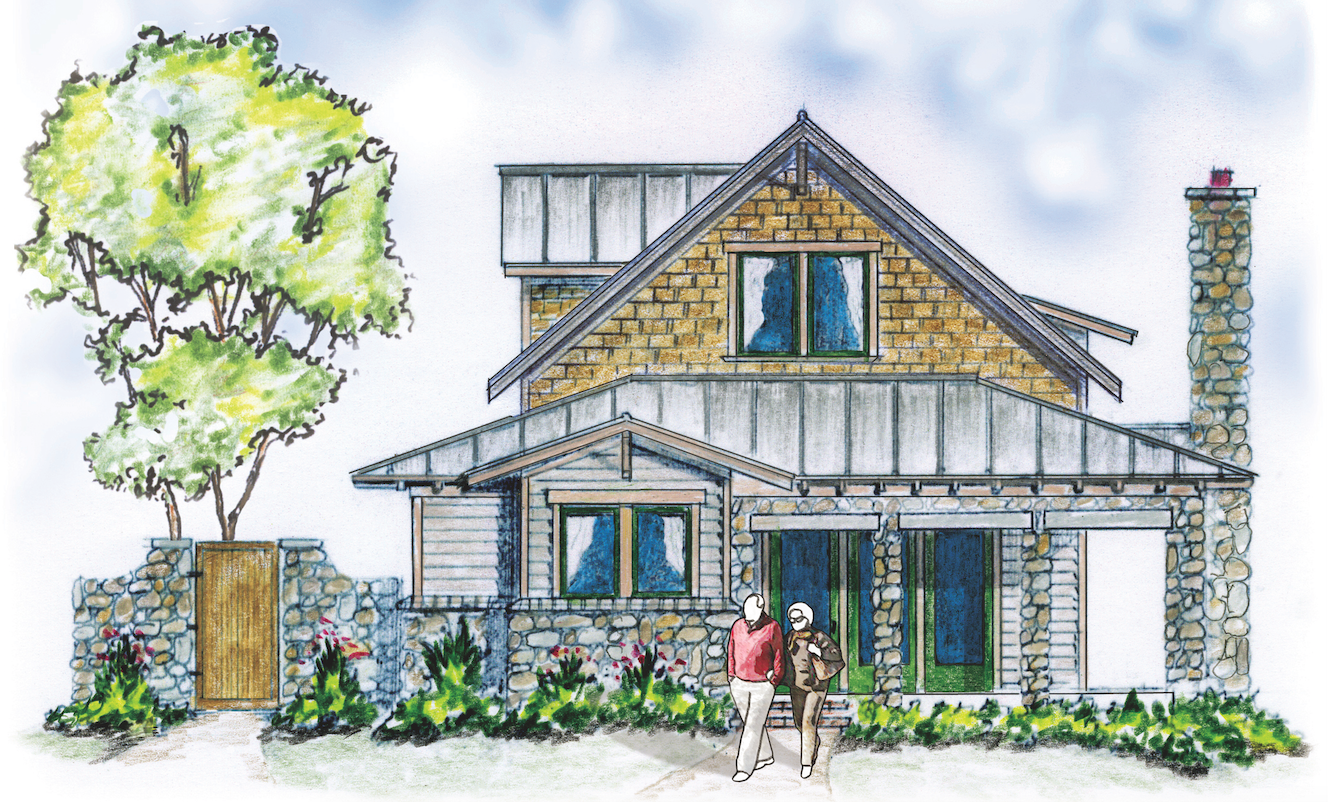
Advertisement
Related Stories
Design
The New American Home 2024: Modern Features, Timeless Comfort
Explore the design elements and unique, luxe details that combine to create a sense of comfort and relaxed indoor/outdoor living in The New American Home 2024
Design
4 Inspiring Adaptive Reuse Projects With Real Impact
From former schools to warehouses, these adaptive reuse projects—winners in the 2023 Best in American Living Awards—succeed in creating new housing and revitalizing their neighborhoods
Design
Kid-Friendly Home Design Four Ways
Do your ‘family’ homes really deliver great design for parents and their children? Here are four clever home design ideas that consider kids and adults alike


